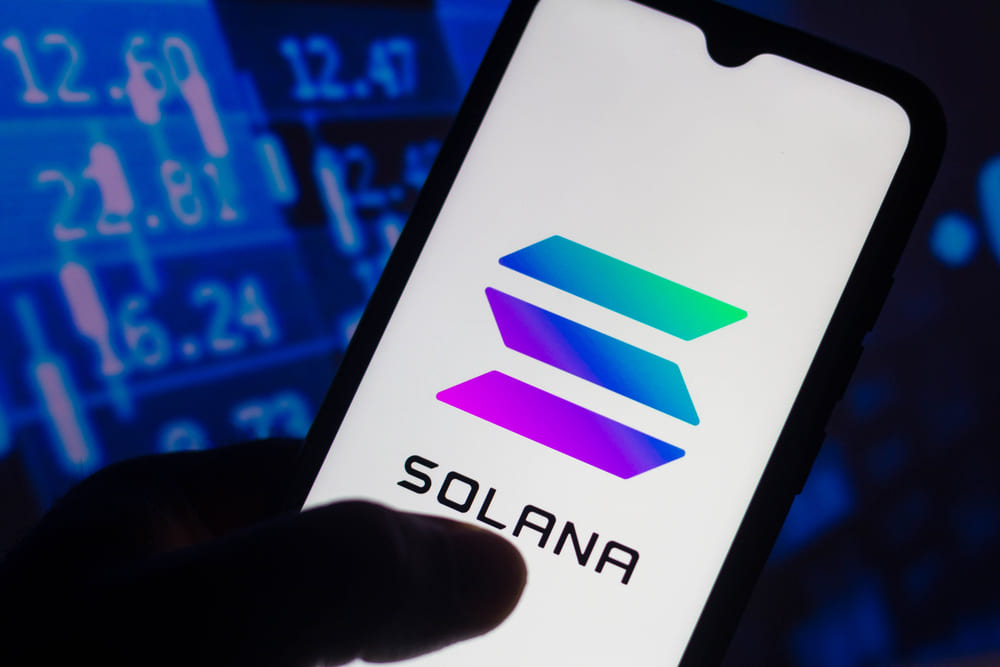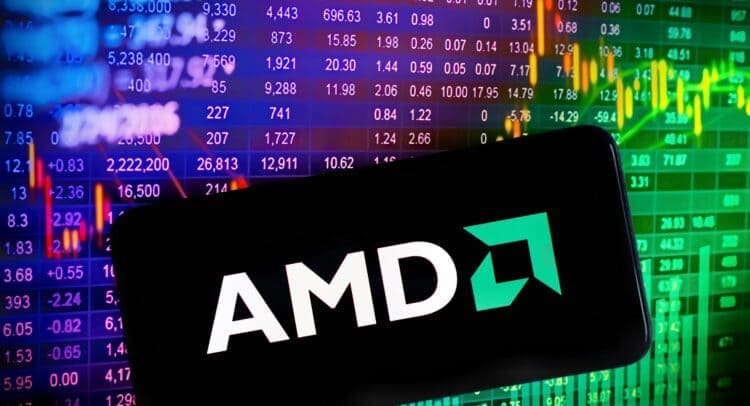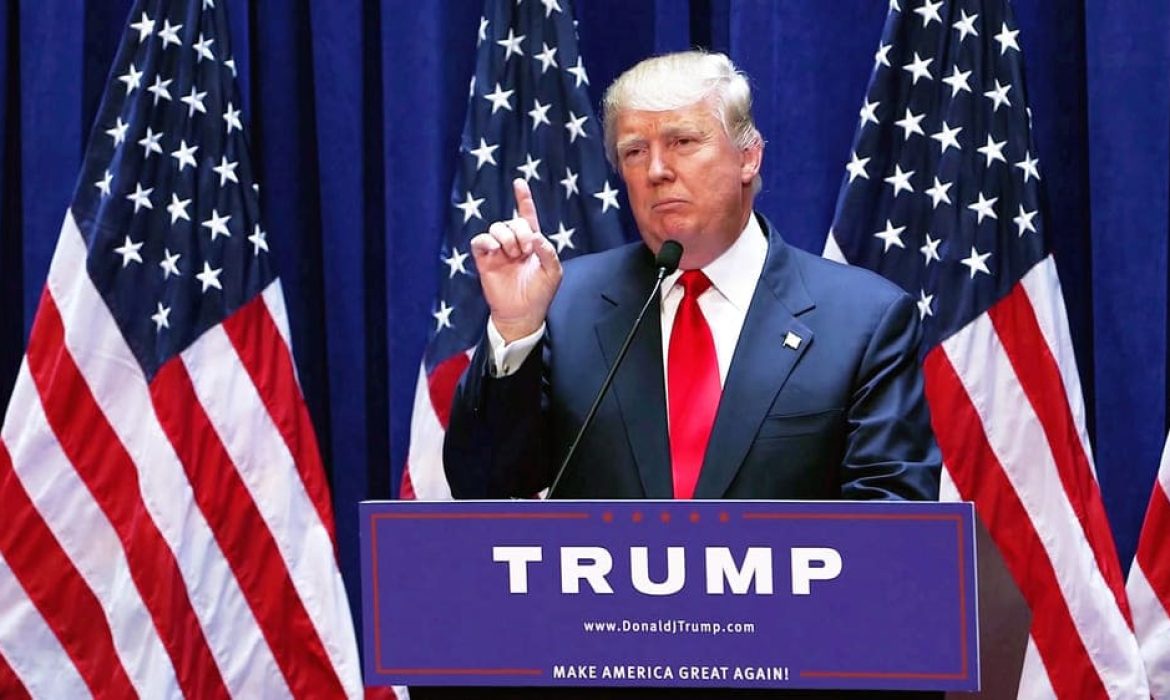Daily Synopsis of the New York market close – July 8, 2025
Date Issued – 8th July 2025
Preview
Shein pivots to Hong Kong after regulatory deadlock in London, Trump revives aggressive tariffs on 14 countries and India rattles the high-frequency trading world with a crackdown on Jane Street. Meanwhile, Asian stocks sway under geopolitical pressure and the U.S. tax code faces sweeping changes. From trade wars to tech disruption, each move has deep implications for capital flows, investor confidence and global risk exposure.
Shein Files Hong Kong IPO to Pressure UK Regulators
Shein has filed confidentially for a Hong Kong IPO after failing to get regulatory approval for a London listing. Disagreements between UK and Chinese regulators center on risk disclosures, especially concerning Shein’s supply chain links to Xinjiang. The move signals mounting frustration as Shein also faces regulatory heat from the EU and U.S. over trade practices and ESG concerns. Hong Kong may offer an alternative.
Investment Insight:
Shein’s IPO saga reflects geopolitical risk for global investors in Chinese firms. While a Hong Kong listing could unlock value, persistent ESG red flags and regulatory scrutiny raise governance concerns. Investors should expect valuation volatility and weigh reputational risk. Long-term upside depends on Shein’s ability to improve transparency, meet global standards and adapt to shifting trade frameworks in the U.S., EU, and UK.
Trump Announces New Tariffs on 14 Nations
Starting August 1, President Trump will impose steep tariffs – ranging from 25% to 40% – on imports from 14 countries, including Japan, South Korea and Indonesia. The move revives his “reciprocal tariff” agenda after a three-month pause and reflects growing trade protectionism. Trump’s action aims to correct trade deficits but risks global retaliation. Financial markets responded negatively, with U.S. indices closing sharply lower on tariff concerns.
Investment Insight:
Trump’s tariff hike signals rising global trade friction – bearish for exporters, logistics firms and global equities. Investors should brace for near-term volatility in manufacturing, tech and automotive stocks. Countries hit hardest may retaliate, increasing risks for multinationals. Stay cautious on emerging markets with high U.S. export exposure. Long-term plays could emerge in domestic reshoring and supply chain resilience themes.

Australia Holds Rates, Awaits Clearer Inflation Data
The Reserve Bank of Australia surprised markets by keeping its policy rate steady at 3.85%, despite expectations of a rate cut. The central bank cited the need for more data to ensure inflation is sustainably headed toward its 2.5% target. Although inflation has cooled to a four-year low, stronger-than-expected recent CPI figures led to caution. Markets reacted with a slight equity dip and a stronger Australian dollar.
Investment Insight:
The RBA’s pause underscores uncertainty in Australia’s monetary outlook. Rate-sensitive sectors like real estate and consumer discretionary may face continued pressure. However, the Aussie dollar’s strength signals market confidence in eventual easing. Investors should monitor upcoming CPI data and trade developments – especially in light of U.S. tariffs – which could justify rate cuts. A likely August move may present upside for bonds and domestic equities tied to stimulus-sensitive sectors.
CoreWeave Buys Core Scientific in $9B Stock Deal
CoreWeave, a fast-growing AI cloud infrastructure firm, will acquire data center operator Core Scientific in an all-stock deal worth $9 billion. The move secures 1.3 gigawatts of capacity, eliminates $10 billion in future rent obligations and boosts CoreWeave’s real estate footprint. The deal, expected to close in Q4 2025, allows CoreWeave to convert crypto mining infrastructure into AI-ready sites, improving efficiency and reducing capital costs.
Investment Insight:
This deal positions CoreWeave as a serious challenger in AI cloud infrastructure, deepening its vertical integration. Eliminating lease costs and repurposing crypto facilities enhances margins. However, the sharp drop in Core Scientific’s stock suggests market skepticism over execution risk and AI conversion costs. Long-term, this could benefit investors favoring infrastructure-heavy AI plays. Consider watching competitors like AWS or Equinix for similar strategic shifts or M&A moves.
EU Probes Robinhood Stock Tokens After OpenAI Warning
Robinhood’s new tokenized stock product is under review by the Bank of Lithuania, its lead EU regulator, after OpenAI publicly disavowed the offering. Robinhood claims its tokens offer blockchain-based exposure to private companies like OpenAI and SpaceX. However, OpenAI clarified the tokens do not represent equity or have its approval. Regulators now await details on the product’s structure and investor communication to assess compliance with EU laws.
Investment Insight:
Robinhood’s stock tokens venture risks regulatory pushback and reputational damage. While tokenization could democratize access to private equity, lack of issuer endorsement raises legal and ethical concerns. Short-term, the probe may dampen Robinhood’s European expansion. For investors, this highlights risks in blockchain-finance hybrids. Competitors offering compliant tokenized assets (like Securitize or Avalanche) may gain traction.
Conclusion
This week’s headlines underscore a deeper trend: policy risk is no longer background noise – it’s a market force. Whether it’s Trump’s unpredictable tariff diplomacy, Shein’s battle for legitimacy or India’s assertive regulatory shift, political decisions are creating volatility and opportunity in equal measure. Investors must track not only earnings and inflation, but also executive orders, trade letters and cross-border legal clashes. Staying nimble, globally aware and diversified has never been more critical.
Upcoming Dates to Watch
- July 9th: FOMC Meeting Minutes
- July 10th: U.S. Jobless Claims + German CPI
Find below some of our Buy/Sell Recommendations. Balfour Capital Group is a distinguished global boutique investment management firm with $350 million AUM and over 1000 Clients.

Disclaimer: This post provides financial insights for informational purposes only. It does not constitute financial advice or recommendations for investment decisions.
Daily Synopsis of the Asia market close – July 7, 2025
Date Issued – 7th July 2025
Preview
India’s Financial Markets Face a Pivotal Shift
India’s financial markets face a pivotal shift as SEBI clamps down on high-frequency trading giants, notably Jane Street, which was temporarily banned and fined $570 million for alleged market manipulation. This regulatory crackdown targets sophisticated foreign traders profiting at the expense of retail investors amid India’s booming equity derivatives market – the world’s largest by volume.
The move signals growing scrutiny on algorithmic trading practices that dominate about 60% of derivatives trading. With firms like Citadel Securities and Jump Trading reassessing their India operations, the market could see reduced liquidity and slower growth. Investors should watch closely as SEBI expands its probe and adjusts regulations, reshaping the high-speed trading landscape in one of the world’s fastest-growing financial hubs.
Trump’s Tax Bill Reshapes U.S. Budget with Cuts
President Donald Trump’s newly signed tax-and-spending bill marks one of the most consequential fiscal overhauls in recent U.S. history, cementing the 2017 Tax Cuts and Jobs Act into permanent law while introducing fresh tax relief aimed at seniors, middle-income households and businesses.
The legislation lifts the SALT deduction cap temporarily, expands the child tax credit and introduces deductions for tip and overtime income, car loan interest and pass-through business income. It also launches “Trump accounts” for children’s savings. However, the bill delivers steep cuts to Medicaid, SNAP and federal student loan programs, raising concerns about the social safety net’s future. The rollback of clean energy tax credits signals a broader ideological shift in fiscal priorities. Markets showed muted reaction as investors await macroeconomic impacts and 2026 budget negotiations.
Investment Insight:
Trump’s fiscal package signals a pro-growth, pro-supply-side shift that may temporarily bolster consumer demand and small business investment—especially in high-income, high-tax states. Yet, deep entitlement cuts and elimination of green energy incentives could fuel longer-term political volatility and curb support for ESG-focused sectors.
Investors should monitor policy-driven rotation away from renewable energy and education services, while sectors like retail, auto and financial services may see moderate tailwinds from enhanced consumer deductions and business-friendly tax structures.
OPEC+ Surprise Output Hike Signals Confidence in Oil Market Stability
In a move signaling renewed confidence in global oil demand and market fundamentals, eight core OPEC+ members—including Saudi Arabia and Russia—agreed to a larger-than-expected production hike of 548,000 barrels per day starting in August. This acceleration outpaces their previously planned increase of 411,000 bpd and marks a continued rollback of voluntary output cuts originally set to stabilize prices during a period of oversupply and geopolitical tension.
OPEC cited low global inventories and steady economic growth as justifications for the hike. Oil prices, which had seen short-term boosts due to seasonal demand and recent Israel-Iran tensions, remain stable, with Brent settling at $68.30 and WTI at $66.50.
Investment Insight:
The faster pace of OPEC+ production increases signals confidence that global demand will absorb the extra supply—potentially tempering oil prices in the short term. For investors, this could pressure energy equities and reduce near-term upside in oil futures. However, lower input costs could provide relief to transport, logistics and industrial sectors.
Watch for possible headwinds to renewable energy plays if fossil fuel supply remains abundant and affordable and monitor potential bottlenecks at geopolitical chokepoints like the Strait of Hormuz. Long-term investors may find value in diversified energy holdings that can weather both production increases and policy volatility.

Asia Stocks Mixed as Trump Tariff Threats Shake Markets Before Deadline
Asia-Pacific markets traded mixed Monday as investors reacted to the U.S. President Trump’s confirmation that new “reciprocal” tariffs will take effect August 1 for countries without deals in place. Trump also announced an extra 10% tariff targeting nations aligned with BRICS policies, just as the bloc meets in Brazil. Japan, Australia and China saw declines, while South Korea posted modest gains.
U.S. stock futures slipped on the news, with Dow futures down 146 points. Meanwhile, markets await the Reserve Bank of Australia’s expected 25-bps rate cut.
Investment Insight:
Escalating trade tensions may weigh on export-heavy Asian economies and global risk appetite. Monitor BRICS-aligned nations for targeted volatility and watch how central banks respond with easing to offset potential trade headwinds.
Tesla Shares Drop Over 3% as Musk’s Political Plans Stir Investor Unease
Tesla stock fell over 3% Monday amid investor concerns about Elon Musk’s announcement to launch a new U.S. political party—the “America Party.” The move further escalates tensions between Musk and former President Trump, who publicly ridiculed the idea. Analysts, including Wedbush’s Dan Ives, warned that Musk’s growing political involvement could distract from his core role at Tesla, prompting potential intervention from Tesla’s board.
Investment Insight:
Musk’s political pivot introduces headline risk and potential governance concerns at a time when Tesla needs stable leadership to navigate slowing EV demand and rising competition. While Tesla remains a major innovator, continued distractions could erode investor confidence and justify a valuation discount. Keep an eye on board reaction and market response—especially if Musk’s political ambitions intensify during election season.
India Cracks Down on Jane Street, Shakes HFT Market
India’s securities regulator, SEBI, imposed a temporary trading ban on the U.S.-based Jane Street and ordered the seizure of $570 million in alleged illicit profits. SEBI accused the firm of running a deliberate, large-scale manipulation scheme targeting India’s booming options market. The crackdown, part of a broader effort to protect retail investors, sent shockwaves across global trading desks. Jane Street, which made billions in India over two years, disputes the allegations and has 21 days to respond.
Investment Insight:
This decisive action signals India’s intent to rein in high-frequency trading amid growing scrutiny over foreign dominance in derivatives markets. With 60% of equity derivatives volume linked to speed traders, SEBI’s move could significantly curb algorithmic activity and deter further foreign expansion. Global firms like Citadel, Jump and Optiver may reconsider investments or staffing. Meanwhile, local brokerages and lower-frequency players could gain market share. Expect heightened regulatory risk, thinner liquidity and volatility around expiry days in the near term.
Conclusion:
SEBI’s decisive action against Jane Street marks a turning point in India’s equity derivatives market, emphasizing the regulator’s commitment to safeguarding retail investors and market integrity. The crackdown is expected to impact global high-frequency trading firms’ strategies and could slow market growth. Investors should monitor regulatory developments and evolving trading volumes closely, as well as the broader implications for market liquidity and volatility.
Upcoming Dates to Watch:
- July 8th: RBA Interest Rate Decision
- July 9th: FOMC Meeting Minutes
- July 10th: U.S. Jobless Claims + German CPI
Find below some of our Buy/Sell Recommendations. Balfour Capital Group is a distinguished global boutique investment management firm with $350 million AUM and over 1000 Clients.

Disclaimer: This post provides financial insights for informational purposes only. It does not constitute financial advice or recommendations for investment decisions.
Daily Synopsis of the New York market close – July 4, 2025
Date Issued – 4th July 2025
Preview
Markets closed early yesterday ahead of the Independence Day holiday – but not before packing in a wave of headlines. From a strong U.S. jobs report that sent gold prices tumbling and yields rising, to oil demand upgrades and biotech deal rumors shaking up the pharma space, investors had plenty to digest. Meanwhile, equities continued their record-setting rally, fueled by resilient economic data and tech momentum. Balfour’s conviction picks once again proved prescient, with Datadog rallying hard on its S&P 500 inclusion.
Gold Falls as U.S. Jobs Data Bolsters Dollar and Treasury Yields
Gold prices dipped on Thursday as stronger-than-expected U.S. labor data lifted the dollar and Treasury yields. June’s payrolls came in at 147,000 – well above the 110,000 estimate – while jobless claims dropped to their lowest level since mid-May. The 2 year yield, often seen as a barometer for rate expectations, spiked 8.3 basis points, reflecting a market reassessment of Fed policy easing. The U.S. Dollar Index climbed 0.4% and spot gold slid 0.5% to $3,344 per ounce, pressured by rising yields and a more attractive greenback.
Investment Insight:
This jobs print complicates the Fed’s path to easing. With labor remaining resilient and services PMI edging back into expansion territory, bets on near-term rate cuts are fading. Gold’s decline is more than seasonal: it signals market recalibration. Investors banking on looser policy will need to watch tomorrow’s NFP and inflation revisions closely.
Barclays Ups 2025 Brent Forecast to $72 on Stronger Demand Outlook
Barclays raised its Brent oil forecast for 2025 by $6 to $72 per barrel, citing stronger-than-expected demand and tighter supply dynamics. Despite a faster phase-out of OPEC+ voluntary cuts, global inventories declined in Q2 – driven by upward revisions in OECD demand and sluggish non-OPEC supply. The bank also lifted its 2026 forecast to $70 per barrel, reflecting optimism around fundamentals even as geopolitical risk premiums faded after the U.S.-mediated ceasefire between Israel and Iran.
Investment Insight:
The upward revision signals that physical demand is outpacing earlier bearish assumptions – a theme now visible across both OECD consumption and Q2 inventory drawdowns. For investors, the message is clear: structural tightness may persist even in a geopolitically calmer environment. While volatility remains, the path of least resistance in crude seems higher, particularly if OPEC+ under-delivers on production gains.

Summit Surges on Licensing Talks With AstraZeneca Over Keytruda Rival
Summit Therapeutics stock was halted Thursday after reports surfaced that AstraZeneca is in advanced talks to license ivonescimab, Summit’s potential blockbuster lung cancer therapy. The deal, still under negotiation, could see Summit receive billions upfront and as much as $15 billion in total, according to sources cited by Bloomberg. While terms aren’t finalized, the drug has already outperformed Merck’s Keytruda in a late-stage trial, positioning it as a serious contender in the PD-1 inhibitor space.
Investment Insight:
If confirmed, this would mark one of the largest licensing deals in biotech history, signaling AstraZeneca’s aggressive push into oncology and potential disruption of Merck’s dominance. With ivonescimab already showing superior data to Keytruda, the strategic value of this asset cannot be understated. Investors should watch closely: a finalized deal could reshape competitive dynamics in one of pharma’s most lucrative categories.
U.S. Markets Surge as Jobs Data Smashes Forecasts
Stocks rallied sharply Thursday after a strong June jobs report reinforced confidence in the U.S. economy. The Dow climbed 344 points, while the S&P 500 and Nasdaq both closed at fresh record highs. Nonfarm payrolls rose by 147,000 – well above forecasts – while unemployment ticked down to 4.1%. Treasury yields jumped as traders adjusted their expectations, now seeing little chance of a Fed rate cut in July.
Investment Insight:
The market is choosing resilience over risk, brushing off geopolitical uncertainty and rate cut delays. The labor data provides cover for the Fed to stay put, while investors shift focus to earnings and trade diplomacy. Watch for volatility next week as tariff negotiations approach their July deadline.
Datadog Soars After S&P 500 Inclusion – Balfour Buy Call Pays Off
Shares of Datadog surged over 13% after S&P Dow Jones Indices announced the company will join the S&P 500 next week, replacing Juniper Networks. The move is set to take effect before the market opens on July 9 and is expected to trigger a wave of institutional buying from index-tracking funds. Names like Robinhood and AppLovin pulled back as Datadog claimed the coveted slot.
Investment Insight:
Balfour Capital Group has been long Datadog since June 17th 2025, at a buy price of $121.93 – and this latest move validates the early conviction. Beyond the passive flows, DDOG’s inclusion reflects fundamental strength and market confidence in its long-term growth story. Keep an eye on price action as index funds rebalance – volatility may offer opportunity.
Conclusion
Macro resilience continues to support equity markets but, under the surface, sector-specific shifts are signaling the next rotation. Energy is tightening, healthcare dealflow is heating up and rate expectations remain volatile. As positioning adjusts post-holiday and eyes turn to the Fed, earnings season and global trade policy, investors should stay agile.
Upcoming Dates to Watch
- July 6th: OPEC+ Meeting
- July 8th: RBA Interest Rate Decision
- July 10th: U.S. Jobless Claims
Find below some of our Buy/Sell Recommendations. Balfour Capital Group is a distinguished global boutique investment management firm with $350 million AUM and over 1000 Clients.

Disclaimer: This post provides financial insights for informational purposes only. It does not constitute financial advice or recommendations for investment decisions.
Daily Synopsis of the New York market close – July 3, 2025
Date Issued – 3rd July 2025
Preview
Markets are walking a narrow path today, caught between soft macro data, political friction and evolving corporate signals. Trump’s megabill – once seen as inevitable – is facing real resistance in the House, threatening both timelines and investor confidence. Microsoft’s fresh wave of layoffs points to continued pressure on corporate agility, even as profits soar. Tesla’s second consecutive delivery decline raised eyebrows, though not enough to rattle bulls – at least not yet. Meanwhile, falling mortgage rates are reviving refinancing demand, though homebuyers remain hesitant. And in geopolitics, the Pentagon’s pause on arms shipments to Ukraine marks a potential turning point, one that could redefine transatlantic defense dynamics.
House GOP Risks Collapse of Trump’s Megabill
House Republicans are struggling to muster the votes needed to advance Trump’s “megabill” in the House. Procedural rules stalled Wednesday night as at least five GOP members voted against it, forcing Speaker Mike Johnson and President Trump into intense behind‑the‑scenes lobbying. Both conservative hardliners (like Chip Roy and Thomas Massie) and moderates alarmed by steep Medicaid cuts remain in opposition. Any revisions would kill the July 4 target and send the measure back to the Senate.
Investment Insight:
The legislative gridlock adds to economic uncertainty. Failure to pass the bill means no immediate debt‑ceiling resolution, likely rattling bond and Treasury markets. Watch for higher yields and volatility in financials. Additionally, delay in tax cuts and spending could weigh on consumer‑sensitive sectors. If momentum stalls into next week, defensive bonds and cash equivalents may become more attractive until clarity returns.
Microsoft Slashes 9,000 Jobs Amid Restructuring Push
Microsoft is laying off about 9,000 employees – under 4% of its workforce – in its latest restructuring move. The layoffs, spanning teams and regions, follow earlier cuts of over 6,000 in May and are aimed at reducing management layers. Gaming, in particular, will see trimmed operations. The move coincides with the start of Microsoft’s fiscal year and ongoing efforts to streamline operations.
Investment Insight:
Layoffs typically signal cost-cutting or efficiency moves and in Microsoft’s case, the strategy appears to be preemptive rather than reactive. With strong fundamentals, growing cloud revenues and margin discipline, these cuts could reinforce Microsoft’s long-term operating leverage. However, recurring rounds of layoffs and management shakeups could create short-term internal friction and suggest shifting strategic priorities. Investors should watch for margin trends in Azure and signals of restructuring gains in upcoming earnings calls.

Tesla Q2 Deliveries Drop 14%, But Stock Rebounds on Low Expectations
Tesla delivered 384,122 vehicles in Q2 2025, marking a 14% year-over-year decline and its second straight quarterly drop. Despite this, shares rallied nearly 5% as the result came in above pessimistic forecasts. Analysts had expected around 387,000 deliveries and whispers were as low as 356,000. Production totaled 410,244 units, mostly Model 3 and Model Y.
Investment Insight:
Tesla’s outlook remains fragile amid intensifying Chinese EV competition and political headwinds tied to Elon Musk’s fading alliance with Trump. With Q2 potentially marking a bottom, July 23’s earnings call will be critical in gauging whether delivery weakness is cyclical or structural.
Refinance Applications Surge as Mortgage Rates Hit 3-Month Low
U.S. mortgage refinance demand surged 7% last week as rates on the 30-year fixed loan fell to 6.79%, their lowest since April. According to the Mortgage Bankers Association, total refinance volume is now 40% higher than a year ago. The biggest spikes came from conventional (+10%) and VA refinance applications (+22%), while the average loan size jumped to $313,700—reflecting renewed activity among higher-income borrowers more sensitive to rate movements. Yet, demand from homebuyers remained almost flat, with purchase applications rising just 0.1% week-over-week despite the improved borrowing costs.
Investment Insight:
Refinancing momentum is back—but it’s telling that homebuyers aren’t following. This divergence highlights a broader caution in the housing market, even as rate expectations soften. Investors should watch mortgage lenders, banks with high exposure to retail home loans and housing REITs. Thursday’s jobs report could swing rate sentiment sharply and either reinforce or reverse this uptick in refinancing.
Pentagon Halts Arms to Ukraine as Stockpile Concerns Mount
The Pentagon has paused a major weapons shipment to Ukraine, including Patriot interceptors and high-explosive munitions, amid fears that U.S. military stockpiles are running thin. The decision, ordered by Defense Secretary Pete Hegseth, follows a broader review of U.S. global commitments, especially after years of supplying Ukraine and engaging in Middle East operations. Kyiv called the delay “painful,” warning it could weaken Ukraine’s air defenses just as Russian aerial attacks intensify. Trump defended the move as necessary to safeguard America’s own readiness, while also pushing for a negotiated ceasefire.
Investment Insight:
The move signals shifting U.S. defense priorities and raises questions about sustained support for foreign conflicts. Defense stocks tied to missile production may face near-term uncertainty, while European defense spending could see upward pressure.
Conclusion
This week is all about recalibration—in policy, in positioning and in perception. From legislative standoffs to corporate belt tightening, the signal is clear: liquidity, leadership and leverage are all being re-evaluated. Watch for volatility spikes as July 4th draws near and macro catalysts converge.
Upcoming Dates to Watch
- July 4th: Senate vote on Republican + Debt ceiling bill
- July 6th: OPEC+ Meeting
Find below some of our Buy/Sell Recommendations. Balfour Capital Group is a distinguished global boutique investment management firm with $350 million AUM and over 1000 Clients.

Disclaimer: This post provides financial insights for informational purposes only. It does not constitute financial advice or recommendations for investment decisions.
Daily Synopsis of the New York market close – July 2, 2025
Date Issued – 2nd July 2025
Preview
Ford stunned the industry with a 14.2% sales jump in Q2, far outperforming expectations and rivals, as F-Series trucks and hybrids led the charge. Meanwhile in Washington, Trump’s “One Big Beautiful Bill” barely cleared the Senate with a tie-breaking vote from VP Vance, setting up a tense showdown in the House. On the crypto front, Solana slumped despite the imminent launch of its first U.S.-listed staking ETF. Copper touched a three-month high on signs of a manufacturing rebound in China. In FX, the euro extended its longest winning streak in over 20 years.
Ford Sales Surge 14% in Q2, Crushing Estimates
Ford reported a 14.2% year-over-year increase in second-quarter vehicle sales, significantly outpacing industry forecasts of around 1.4% growth. The automaker delivered 612,095 new vehicles, driven by strong performance in F-Series trucks – their best Q2 since 2019 – and a 23.5% rise in hybrid sales. However, pure EV sales dropped 31.4% year-over-year. For the first half of 2025, Ford sold a record 156,509 electrified vehicles, up 14.7%. Rivals GM, Kia and Hyundai also reported solid gains, but Ford’s results were the most notable in terms of outperformance.
Investment Insight:
Ford’s sharp beat on Q2 sales – especially in high-margin truck and hybrid segments – reinforces the company’s strategic pivot toward hybrid production over fully electric vehicles. With industrywide demand showing signs of deceleration in June, Ford’s aggressive early-quarter sales and hybrid gains position it well if EV demand softens further. Investors may interpret this as a bullish signal for Ford’s adaptability in a tariff-shifting and price-sensitive environment.
Trump’s Megabill Narrowly Passes Senate, Faces House Fight
President Donald Trump’s flagship domestic policy package – the “One Big Beautiful Bill Act” – passed the Senate by a razor-thin 51-50 margin, with Vice President JD Vance breaking the tie. The vote followed a tense, 24-hour amendment marathon. While the Senate’s version includes deeper Medicaid cuts, it now heads to a skeptical House, where Republican hardliners like Rep. Chip Roy remain opposed. With Speaker Mike Johnson able to afford only three defections, the bill’s future remains uncertain ahead of Trump’s self-imposed July 4 deadline.
Investment Insight:
The political wrangling around Trump’s megabill underscores the legislative uncertainty weighing on markets. While fiscal expansion can be stimulative, the Congressional Budget Office’s projection of a $3 trillion deficit increase over a decade raises concerns about long-term debt sustainability. Investors may want to monitor Treasury yields and risk sentiment, as a failed vote could rattle confidence, while passage could add fuel to inflation and rate-cut recalibration narratives.

Solana Slides Below $146 Ahead of ETF Debut
Solana (SOL) dropped 7.84% to $145.08 on July 1, outpacing the broader crypto market’s modest 0.24% dip, despite the imminent launch of the REX-Osprey SOL + Staking ETF – the first U.S.-listed fund offering both SOL exposure and staking rewards. The ETF, set to launch July 2 under the 1940 Act structure, aims to bolster institutional adoption through regulatory clarity and yield integration. Market analysts view the fund as a long-term positive, but SOL’s sharp decline and technical weakness signal traders remain cautious.
Investment Insight:
While the launch of the REX-Osprey SOL ETF marks a structural breakthrough for Solana’s institutional credibility, the pre-launch sell-off reflects near-term uncertainty and typical “sell the news” behavior. The 1940 Act structure and staking yield could make the ETF a long-term catalyst – especially if rivals like VanEck and Bitwise follow suit. Investors may find entry opportunities near accumulation zones around $145, but should remain alert to volatility as crypto markets recalibrate around regulatory and liquidity developments.
Copper Hits 3-Month High on China Recovery
Copper prices surged to a three-month high on Tuesday, with the London Metal Exchange contract touching $10,000 per ton, buoyed by strong end-of-session buying in China. The rally follows a rebound in Chinese factory activity and signs of easing U.S./China trade tensions. Improved manufacturing data points to renewed demand from the world’s largest copper consumer, while ongoing tariff talks may temporarily boost U.S.-bound shipments. Despite tightness easing in London, global supply dynamics remain in flux.
Investment Insight:
Copper’s rally reflects not just China’s industrial rebound, but also speculative flows tied to shifting tariff timelines. If U.S./China negotiations continue to de-escalate, copper demand could remain firm through the summer. Investors should monitor LME spreads and Tom/next signals for signs of renewed tightness. Current levels offer upside for those betting on cyclical recovery and infrastructure-linked demand, particularly if global manufacturing continues to stabilize into Q3.
Euro Surge Extends to Longest Rally Since 2004
The euro is riding its strongest winning streak in over 20 years, briefly touching $1.1806 and marking a near 14% gain against the U.S. dollar in 2025. Fueled by growing conviction that the Fed will ease policy more aggressively than the ECB, options traders are doubling down on bullish bets, with the $1.20 level in sight. While Trump’s megabill and labor data have temporarily supported the dollar, strategists argue the structural decline has resumed amid mounting U.S. fiscal risks and shifting geopolitical focus.
Investment Insight:
The euro’s strength signals a notable realignment in FX markets, as traders hedge against a softening dollar and seek refuge in currencies with stronger macro positioning. With Eurozone inflation stabilizing and ECB policymakers cautiously embracing the rally, EUR/USD may continue its ascent. Watch risk reversals and upcoming Fed comments closely – the next policy steps could push the euro beyond $1.20, particularly if market sentiment holds and U.S. political noise intensifies.
Conclusion
Today’s signals cut across asset classes: demand resilience in U.S. autos, structural bets on Solana staking, and macro-driven flows into copper and the euro. The Senate’s push to deliver Trump’s domestic package before July 4 adds political pressure to already sensitive markets. Momentum in commodities reflects more than supply tightness – it reveals where investors are positioning for policy divergence, trade thaw, and currency realignment.
Upcoming Dates to Watch:
- July 3rd: U.S. Non‑farm Payrolls report at 08:30 GMT
- July 4th: Senate vote on Republican + Debt ceiling bill
- July 6th: OPEC+ Meeting
Find below some of our Buy/Sell Recommendations. Balfour Capital Group is a distinguished global boutique investment management firm with $350 million AUM and over 1000 Clients.

Disclaimer: This post provides financial insights for informational purposes only. It does not constitute financial advice or recommendations for investment decisions.
Daily Synopsis of the New York market close – July 1, 2025
Date Issued – 1st July 2025
Preview
Markets continue to pivot around AI momentum and macro catalysts. Meta surged to an all-time high as Zuckerberg ramped up AI hiring, poaching key talent and expanding superintelligence efforts. Gold extended gains on rising bets for a Fed rate cut, with the dollar weakening and investors preparing for this Thursday’s job data. Oil prices held steady as the market awaited OPEC+’s next move on July 6, while U.S. trade tensions linger ahead of the July 9 tariff deadline. On the earnings front, Deckers underperformed despite broader market gains and Tesla slipped as analysts slashed estimates and issued a “Strong Sell” signal.
Meta Shares Hit Record as AI Hiring Surges
Meta’s stock soared to an all-time high of $747.90 on Monday, driven by mounting investor enthusiasm over its aggressive push into artificial intelligence. CEO Mark Zuckerberg is spearheading a major talent acquisition campaign, recruiting top AI minds from Scale AI, Safe Superintelligence and even OpenAI. This move follows a $14.3 billion investment into foundational AI projects and a series of high-profile hires, including Alexandr Wang and Nat Friedman. Meta’s new Superintelligence Labs will lead the development of next-gen AI models, as competition intensifies with Microsoft, Nvidia and Alphabet in the race for AI dominance.
Investment Insight:
Meta’s AI hiring spree signals a strategic shift from consumer-facing products to deep tech infrastructure. The aggressive recruitment and billion-dollar capital allocation show long-term conviction in owning the AI stack – data, compute and talent. Investors betting on foundational AI development should watch Meta’s vertical integration moves closely. As Meta builds internal capabilities, future valuation could decouple from ad revenue cycles and align more with AI infrastructure multiples, much like Nvidia. Near-term, the stock may continue its upward momentum, fueled by institutional demand and bullish sentiment around AI superintelligence capabilities.
Gold Gains Again as Rate-Cut Hopes Mount
Gold rose for a second straight session, climbing 0.6% to $3,322 an ounce, as investors ramp up bets on two potential U.S. rate cuts in 2025. The rally follows a 0.9% gain on Monday, driven by declining Treasury yields and a weakening dollar – now down nearly 11% YTD, its worst half-year performance since 1973. Gold’s resilience, despite recent pullbacks, is fueled by lingering trade tensions, geopolitical risks and uncertainty surrounding Trump’s tariff policy. The precious metal is now less than $200 from its April record, with Thursday’s U.S. jobs report seen as a key near-term catalyst.
Investment Insight:
Gold remains a top hedge in a disinflationary yet uncertain macro environment. The deepening decline of the dollar and increased expectations of Fed easing create a bullish setup for further gold appreciation. With real yields potentially heading lower and geopolitical risks persisting, institutional flows into gold ETFs may accelerate. Investors seeking to front-run rate pivot trades may view pullbacks in gold as buying opportunities. Keep an eye on Thursday’s job data – weak numbers could ignite a breakout above $3,350 as markets further price in dovish Fed action.

Oil Steady as OPEC+ Output Hike Looms
Oil prices held firm on Tuesday ahead of the OPEC+ meeting on July 6, where the alliance is expected to announce a 411,000 bpd production hike for August – the fourth consecutive monthly increase. Brent crude hovered at $66.79 a barrel, while WTI stood at $65.15. The anticipated hike, totaling 1.78 million bpd for 2025, could outpace demand, especially as geopolitical tensions ease and trade talks continue ahead of Trump’s July 9 tariff deadline. Morgan Stanley forecasts Brent could slide to $60 by early 2026 due to rising supply and subdued geopolitical risk.
Investment Insight:
With geopolitical risk premiums fading and OPEC+ output rising steadily, oil markets may face oversupply headwinds into 2026. Investors should consider rotating out of energy trades reliant on price shocks and instead focus on refiners or logistics firms with margin resilience. The July 6 OPEC+ decision and July 9 tariff deadline may inject short-term volatility, but structural pressures – including weak Chinese demand and softening global growth – suggest a medium-term bearish tilt for crude.
Deckers Dips as Analysts Turn Bearish Ahead of Earnings
Deckers (DECK), the maker of UGG footwear, closed down 1.08% at $103.07 despite broader market gains. Over the past month, the stock has lagged behind both the S&P 500 (+4.27%) and the Retail-Wholesale sector (+2.65%). With earnings approaching, analysts expect EPS of $0.67 (–10.67% YoY) and revenues of $899.2M (+8.95% YoY). However, sentiment has turned cautious: the stock now holds a Zacks Rank of #4 (Sell) and consensus EPS estimates have been revised down 1% in the past 30 days.
Investment Insight:
Deckers may face short-term headwinds as profitability expectations soften. While revenue growth is forecasted, declining EPS and a high PEG ratio (6.33 vs. industry average of 1.94) signal stretched valuation amid slowing earnings momentum. Traders may consider reducing exposure or hedging ahead of the next earnings report. The stock’s current underperformance, coupled with negative revisions, justifies caution until a clearer earnings trend emerges.
Tesla Slides as Analysts Slash Forecasts
Tesla (TSLA) ended the day down 1.84% at $317.66, underperforming the broader market. The EV giant has dropped 6.59% in the past month, outpacing losses in the Auto-Tires-Trucks sector but trailing the S&P 500’s 4.27% gain. Analysts now forecast a 17.3% drop in EPS ($0.43) and an 8.6% revenue decline ($23.31B) for the upcoming quarter. Full-year estimates also show contraction: EPS down 22.3% and revenue down 1%. Tesla has received a Zacks Rank of #5 (Strong Sell) following a slight downgrade in EPS expectations over the past 30 days.
Investment Insight:
Tesla’s premium valuation – with a Forward P/E of 171.7 and PEG ratio of 9.03 – is increasingly difficult to justify amid slowing growth and bearish analyst sentiment. The company’s Zacks Rank of #5 (Strong Sell) and downward revisions to estimates are early signals of deeper institutional caution. With industry headwinds and decelerating demand pressuring fundamentals, investors should brace for potential downside and consider reevaluating exposure ahead of the upcoming earnings release.
Conclusion
This week underscores the power of narrative: AI as a growth engine, gold as a hedge, oil as a geopolitical barometer and equities as sentiment signals. As central banks and trade policy loom large, price action is no longer just about numbers – it’s about positioning.
Upcoming Dates to Watch
- July 4th: Senate vote on Republican + debt ceiling bill
- July 8th: China Non-Manufacturing PMI
Find below some of our Buy/Sell Recommendations. Balfour Capital Group is a distinguished global boutique investment management firm with $350 million AUM and over 1000 Clients.

Disclaimer: This post provides financial insights for informational purposes only. It does not constitute financial advice or recommendations for investment decisions.
Daily Synopsis of the Asia market close – June 30, 2025
Date Issued – 30th June 2025
Preview
Today’s headlines point to opposing forces shaping investor sentiment
China’s manufacturing PMI remains in contraction despite fiscal stimulus and trade progress with the U.S. – signaling persistent structural challenges. Oil pulls back as ceasefires and OPEC+ supply dampen the risk premium, shifting energy sentiment lower. Meanwhile, fresh AI optimism pushes AMD higher, backed by robust fundamentals and strong forward guidance. Robinhood doubles down on crypto futures with micro contracts for BTC, SOL and XRP – signaling retail appetite remains very much alive. We explore how to navigate this mixed macro landscape with clarity and conviction.
China PMI signals 3rd straight month of contraction
China’s official manufacturing PMI rose slightly to 49.7 in June, marking the third consecutive month in contraction territory. While production and new orders showed mild improvement, employment and inventories continued to decline. The non-manufacturing PMI also edged up to 50.5, lifted by strong construction activity. Despite Beijing’s fiscal stimulus and easing trade tensions with the U.S., deflation and a prolonged price war continue to pressure industrial profitability. Economists remain cautious, warning that weaker exports and fading government support could drag growth in the second half.
Investment Insight:
Short-term optimism around China’s industrial rebound is tempered by structural headwinds. The modest PMI uptick offers relief to equity markets – as reflected in the CSI 300’s rise – but deeper issues like falling prices, weak employment and soft consumer demand persist. Exporters with U.S. exposure may benefit from eased tariffs, yet deflationary trends and industrial margin pressure call for selective exposure. Watch Chinese construction-linked equities for short-term momentum, while maintaining caution on broader manufacturing plays.
Oil drops as OPEC+ eyes more supply in August
Oil prices slipped Monday, with Brent futures falling to $67.65 and WTI to $65.16, as geopolitical tensions in the Middle East eased and expectations rose for another OPEC+ output hike in August. A ceasefire between Iran and Israel erased much of the risk premium that had lifted prices earlier in June. Meanwhile, sources say OPEC+ plans a fifth consecutive monthly supply increase, adding 411,000 barrels per day. Weaker demand from China and broad uncertainty about global economic growth are also capping price recovery, even as U.S. rig counts fall to their lowest level since 2021.
Investment Insight:
The oil market’s sharp reversion underscores its vulnerability to geopolitical shocks and demand uncertainty. While cooling Middle East tensions and rising OPEC+ output add bearish weight, the longer-term view hinges on China’s industrial rebound and U.S. growth signals. Investors should monitor July 6’s OPEC+ meeting for clarity on supply dynamics. Short-term traders may find opportunity in oil-linked ETFs or energy sector equities sensitive to output guidance, while longer-term positions require caution amid slowing global industrial demand and fragile sentiment in commodities.

AMD Rides AI Surge Toward $175 Price Target
AMD stock is gaining strong momentum, rising 19% year-to-date, as investor enthusiasm around artificial intelligence fuels growth expectations. Analysts highlight AMD’s 30% forward EPS growth rate and its central role in powering AI infrastructure through CPUs and GPUs. Despite trading at a higher P/E than industry peers, the company’s AI-driven expansion and strategic partnerships – including with Saudi Arabia’s HUMAIN – position it for further upside. Risks tied to Taiwan and U.S.-China tensions remain, but management’s diversification and robust cash flow (~$3B) reinforce long-term confidence. Wall Street maintains a Moderate Buy, with a $132.17 average target, below some bullish forecasts of $175.
Investment Insight:
AMD is a cornerstone in the AI arms race and remains well-placed to benefit from the sector’s explosive capital inflows. Short-term, bullish sentiment is supported by earnings growth, buybacks and Fed policy expectations. Long-term, AMD’s diversification outside Asia and supply chain hedges (via TSMC’s U.S. expansion) reduce geopolitical risks. Investors seeking high-growth tech exposure may consider AMD a strategic hold or buy on dips, with awareness that current valuations price in optimism. Watch closely for Fed decisions and AI infrastructure capex trends, which could propel – or cap – further upside.
Robinhood Debuts Micro Crypto Futures in U.S.
Robinhood has launched micro futures contracts for Bitcoin, Solana and XRP in the U.S., broadening its crypto offering to nearly 26 million funded accounts. These micro contracts allow traders to speculate or hedge with less capital compared to standard futures. The rollout expands a suite that began with BTC and ETH futures in January and follows Robinhood’s $200M Bitstamp acquisition and $179M WonderFi deal. According to Robinhood, crypto notional volumes hit $11.7B in May – up 36% from April and 65% year-over-year – highlighting growing demand for accessible crypto trading products.
Investment Insight:
Robinhood’s push into micro crypto futures reflects a broader shift to attract more retail and semi-pro traders into derivatives markets. With smaller entry barriers, these instruments may increase platform engagement and trading volume – fueling fee revenue. The recent Bitstamp and WonderFi acquisitions point to a long-term bet on crypto infrastructure. For investors, HOOD is positioning itself as a fintech gateway to crypto markets. However, the rising regulatory scrutiny and crypto’s volatility still pose headwinds. Keep an eye on user growth, trading activity and the firm’s international expansion for sustained upside.
Conclusion:
The week opens with a mix of caution and conviction. China’s economy shows signs of stabilization, but real momentum is still elusive. Commodities like oil appear unanchored, reacting more to headlines than fundamentals. In contrast, tech – and particularly AI – continues to build momentum, with AMD and Robinhood capitalizing on secular tailwinds.
Upcoming Dates to Watch:
- July 4th: Senate vote on Republican + debt ceiling bill
- July 8th: China Non-Manufacturing PMI
Find below some of our Buy/Sell Recommendations. Balfour Capital Group is a distinguished global boutique investment management firm with $350 million AUM and over 1000 Clients.

Disclaimer: This post provides financial insights for informational purposes only. It does not constitute financial advice or recommendations for investment decisions.
Daily Synopsis of the New York market close – June 27, 2025
Date Issued – 27th June 2025
Preview
This week’s headlines paint a complex global picture: U.K. car production slumps to levels not seen since 1949, highlighting the toll of shifting trade policies and tariff shocks. In China, industrial profits continue their downward spiral, despite retail momentum and strong exports. Meanwhile, Xiaomi charges into the EV war, undercutting Tesla with record demand. Core Scientific soars on buyout talks as AI infrastructure reshapes the mining sector. Salesforce CEO Marc Benioff confirms what many suspected – AI is now doing nearly half the work.
UK Auto Production Falls to Lowest Since 1949
UK car and commercial vehicle production dropped 32.8% in May to just 49,810 units – the lowest level since 1949, excluding pandemic lockdowns. The slump is largely driven by model transitions, restructuring and the impact of Trump’s 25% tariffs on imported autos. Although a partial tariff rollback was announced for the first 100,000 units shipped annually, exports to the U.S. still fell over 55%. The automotive sector, a cornerstone of UK exports, faces continued headwinds despite recent trade policy adjustments and diplomatic efforts aimed at boosting long-term competitiveness.
Investment Insight:
Investors with exposure to UK automotive manufacturers or suppliers – particularly names like Jaguar Land Rover (Tata Motors) and Aston Martin – should prepare for prolonged margin pressure. While the temporary tariff relief may benefit some U.S.-based importers, overall export volumes remain constrained. Watch for stimulus measures or bilateral trade revisions in H2 as potential catalysts. Supply chain-sensitive equities and related ETFs (e.g. CARZ, FCAU) may underperform if export flows fail to rebound quickly.
China Industrial Profits Slide 9.1% in May
China’s industrial profits plunged 9.1% in May, the steepest drop in seven months, signaling that Beijing’s stimulus measures are not yet reviving corporate margins. Cumulative profits for the year are down 1.1%, with sectors like mining falling 29%. Despite a retail rebound and 5.2% GDP growth in H1 2025, analysts say weak demand and a brutal price war are pressuring margins. The Politburo may delay further stimulus until deeper economic cracks emerge, especially amid ongoing U.S./China trade tensions and export shifts.
Investment Insight:
Investors should monitor companies exposed to China’s industrial base, especially mining and automotive manufacturing. The profit compression, driven by deflationary forces and competitive discounting, could strain industrials and commodity-linked sectors. While H1 GDP remains strong, the lack of immediate stimulus action suggests a cautious near-term outlook for Chinese cyclicals and industrial ETFs. However, firms benefiting from retail demand or exporting to Southeast Asia and the EU may outperform as trade routes shift.
Xiaomi Shares Surge on New YU7 EV Launch
Xiaomi shares jumped over 5% to a record high after unveiling its new electric SUV, the YU7, priced at 253,500 yuan – 10,000 yuan cheaper than Tesla’s Model Y. Within three minutes of launch, over 200,000 orders were placed. The YU7 boasts a 760 km range, Apple CarPlay support, Nvidia’s Thor chip for driver assist and advanced AI features. Xiaomi also debuted AI-powered smart glasses alongside the EV, expanding its presence in the AI-driven consumer tech space.
Investment Insight:
Xiaomi’s aggressive pricing and rapid market traction in the EV sector signal a growing threat to Tesla and legacy automakers in China. With demand for smart, feature-rich EVs accelerating, Xiaomi’s vertically integrated ecosystem – spanning smartphones, AI devices and now vehicles – may unlock new revenue streams. Investors should watch for delivery execution and margin impact from price competition, but the momentum positions Xiaomi as a multi-sector growth story in both tech and mobility.

Core Scientific Soars on CoreWeave Buyout Rumors
Core Scientific shares surged 35% after reports from The Wall Street Journal revealed acquisition talks with CoreWeave, its AI infrastructure partner. The deal, potentially closing in weeks, would follow a previously rejected bid valuing Core Scientific at just a quarter of its current $5B market cap. The rally marked the company’s second-biggest day since its Nasdaq relisting in early 2024. Core Scientific has shifted from crypto mining to AI hosting, securing $10.2B in long-term commitments from CoreWeave, with 590 MW of capacity expected by early 2026.
Investment Insight:
Core Scientific’s transition from bitcoin mining to AI infrastructure has reignited investor interest, with CoreWeave’s strategic backing serving as both growth catalyst and potential exit path. If the deal materializes at a premium, it could set a precedent for revaluing distressed tech infrastructure firms repurposed for AI workloads. Investors should monitor regulatory risks and integration challenges, but the upside from AI-linked infrastructure demand keeps Core Scientific firmly in the speculative growth spotlight.
AI Now Handles Half of Salesforce’s Workload
Salesforce CEO Marc Benioff revealed that artificial intelligence is performing 30% to 50% of the company’s internal workload. Labeling it a “digital labor revolution,” Benioff emphasized how AI is helping tech firms cut costs and restructure operations. Salesforce itself laid off over 1,000 employees this year as part of its AI-driven transformation. The company claims its AI systems operate with 93% accuracy – well above competitors – thanks to vast internal data. As automation expands, Benioff encourages reallocating human talent to higher-value tasks.
Investment Insight:
Salesforce’s aggressive AI integration signals a broader enterprise shift toward automation-led efficiency. High internal adoption and superior data positioning give Salesforce a competitive edge in the AI software market. Investors should watch for margin improvements and further workforce restructuring as key signals of long-term cost optimization. The trend could also reshape valuations across SaaS companies, favoring those with robust AI infrastructure and scalable data ecosystems.
Conclusion:
From auto tariffs to AI-fueled restructuring, today’s news underscores a volatile yet opportunity-rich environment. Markets are reacting less to sentiment and more to structural pivots – from industrial realignment to tech adoption at scale. For investors, the signal is clear: follow the capital flowing toward AI efficiency, consumer pivot points and infrastructure reinvention.
Upcoming Dates to Watch:
- June 30th: U.S. & Japan Industrials; UK Nationwide HPI
- July 4th: Senate vote on Republican + debt ceiling bill
- July 8th: China Non-Manufacturing PMI
Find below some of our Buy/Sell Recommendations. Balfour Capital Group is a distinguished global boutique investment management firm with $350 million AUM and over 1000 Clients.

Disclaimer: This post provides financial insights for informational purposes only. It does not constitute financial advice or recommendations for investment decisions.
Daily Synopsis of the New York market close – June 26, 2025
Date Issued – 26th June 2025
Preview
BP shares jumped after a report of early-stage takeover talks with Shell, though Shell firmly denied any negotiations. Nvidia surged to a new record, reclaiming its spot as the world’s most valuable company despite China-related export headwinds. The dollar weakened after Trump hinted at replacing Fed Chair Powell by October, increasing expectations for earlier rate cuts. Coinbase hit a 52-week high as analysts dubbed it the “Amazon of crypto.” Finally, J.P. Morgan launched its largest-ever active ETF, anchored by a $2B client investment – signaling a shift in strategy as active management returns to the spotlight.
BP Shares Jump on Takeover Speculation by Shell
BP shares surged over 10% intraday following a Wall Street Journal report that Shell was in early talks to acquire BP – a move that, if confirmed, would mark the largest energy sector deal since Exxon-Mobil’s 1990s merger. However, Shell swiftly denied any ongoing discussions, calling the story “market speculation.” BP shares settled up 1.64% by market close. Analysts say BP’s recent underperformance and shift back toward oil and gas have made it a plausible target, especially after activist investor Elliott Management disclosed a 5% stake. There’s also talk of a possible breakup and sale in parts rather than a full acquisition.
Investment Insight:
The sharp price movement on speculation highlights the fragility of market sentiment around legacy energy giants undergoing strategic shifts. Even though Shell denied the deal, the very plausibility of such M&A suggests continued consolidation pressure in the oil sector. Investors should monitor activist influence on BP’s strategy and potential divestitures, which could unlock value even without a formal takeover. The speculative premium on BP stock may persist short-term, but long-term positioning depends on execution of its reset strategy.
Nvidia Hits Record High, Reclaims Market Cap Crown
Nvidia shares surged over 4% on Wednesday, closing at an all-time high of $154.31 and reclaiming the title of the world’s most valuable company with a market cap of $3.77 trillion, edging out Microsoft. Despite the company being effectively shut out of the $50 billion Chinese market due to U.S. export controls, investor confidence remains strong. The company’s AI leadership, driven by dominant GPU performance in data centers, continues to power revenue. Nvidia reported 69% YoY revenue growth in May, with expectations of a 53% rise to $200 billion for the full year. CEO Jensen Huang reiterated AI and robotics as Nvidia’s twin growth pillars.
Investment Insight:
Nvidia’s resilience, despite losing access to China and absorbing a $4.5 billion write-off, underscores how deeply entrenched it is in the global AI supply chain. Investors appear willing to overlook geopolitical risk in favor of long-term AI dominance. With AI infrastructure demand still growing and minimal viable competition on the horizon, Nvidia’s valuation reflects more than just earnings – it reflects monopoly-like influence in a megatrend. Near-term volatility may come from regulatory or geopolitical news, but the long-term thesis remains strong if execution in data center and robotics verticals continues.
Dollar Drops as Trump Eyes Fed Chair Replacement Before Election
The U.S. dollar fell to a 3-year low following a report from The Wall Street Journal that President Trump may replace Federal Reserve Chair Jerome Powell by September or October, well ahead of Powell’s term ending in May 2026. Bloomberg’s dollar index fell 0.4% Thursday and is now down over 8% in 2025. Markets are interpreting Trump’s move as a signal for earlier and more aggressive rate cuts, with traders now pricing in 66 basis points of easing by year-end, up from 51bps just last week. The greenback weakened broadly, with Asian and emerging market currencies gaining. Trump’s criticisms of the Fed’s hawkish stance and rising U.S. debt are adding pressure. Candidates floated as Powell’s successors include Kevin Warsh and Kevin Hassett.
Investment Insight:
This development introduces a rare blend of political and monetary risk. A potential leadership change at the Fed – especially under pressure from a president seeking looser policy – could undermine the central bank’s credibility and accelerate dollar depreciation. Traders now see increased odds for a July or September rate cut. For investors, this suggests near-term tailwinds for gold, non-dollar assets and EM currencies. However, markets should also brace for volatility if Trump escalates rhetoric or names a controversial successor. Long-term implications could include steeper yield curve shifts and inflation risk repricing if Fed independence is perceived to be under threat.

Coinbase Hits 52-Week High on “Amazon of Crypto” Label
Coinbase (COIN) surged to a 52-week high on Wednesday after Bernstein analysts raised their price target from $310 to $510, calling the exchange the “Amazon of crypto services.” The stock closed over 3% higher and is nearing its 2021 all-time high of $357.39. Analysts highlighted Coinbase’s dominance in U.S. crypto trading, stablecoin operations, institutional custody, Base blockchain infrastructure and Prime lending desk. The platform also acts as custodian for most U.S. spot Bitcoin ETFs and now powers crypto integrations for over 200 banks and fintechs. COIN stock is up more than 40% since the Senate passed the GENIUS Act, a bill that would establish federal regulations for stablecoins. CEO Brian Armstrong emphasized the company’s broad reach, while Fundstrat’s Sean Farrell said there’s still room to enter the trade.
Investment Insight:
Coinbase’s continued momentum underscores its transformation from a pure-play crypto exchange to a full-spectrum financial infrastructure provider. Regulatory progress in Washington – especially the GENIUS Act – offers further legitimacy and upside for Coinbase and the broader crypto ecosystem. The Bernstein upgrade reflects a shift in institutional sentiment, viewing Coinbase not just as a trading platform, but as a strategic backbone for regulated crypto finance. Investors bullish on digital asset adoption, institutional custody and ETF flows may find Coinbase an attractive long-term position – especially if the regulatory narrative remains favorable and spot ETF volumes accelerate.
J.P. Morgan Launches $2B Active High-Yield ETF
J.P. Morgan Asset Management unveiled its largest active ETF to date – the JPMorgan Active High Yield ETF – launched with a $2 billion anchor investment from an unnamed external client. The fund, trading on the Cboe BZX Exchange, targets sub-investment grade bonds (below Baa3/BBB-), offering higher yields at greater risk. Priced at 45 basis points and benchmarked against the ICE BofA US High Yield Constrained Index, the ETF marks a major push by JPMorgan into actively managed fixed-income strategies. CEO George Gatch forecasts a fourfold increase in active fixed-income ETF assets under management (AUM) over the next five years, as investors rotate away from passive strategies that dominated the era of near-zero interest rates.
Investment Insight:
J.P. Morgan’s bold $2B entry into active high-yield ETFs reflects a structural shift in investor preferences amid rising rates and economic uncertainty. In an environment where passive beta no longer guarantees returns, active credit selection becomes crucial – especially in the high-yield space where default risk and dispersion are elevated. This move not only cements JPM’s dominance in active fixed-income ETFs but signals increasing institutional demand for tactical, income-generating vehicles. For investors, it’s a reminder: the era of “buy the index and chill” is giving way to precision-driven positioning, especially in debt markets.
Conclusion
Narratives are shifting, but positioning remains aggressive. Investors are rewarding bold strategies – whether it’s Nvidia’s AI dominance or Coinbase’s infrastructure moat. At the same time, the weakening dollar, energy sector consolidation rumors and a resurgence in active bond fund inflows point to a more tactical, selective capital rotation. Momentum remains the driver, but policy fragility is creeping into the background.
Upcoming Dates to Watch
- June 27th: U.S. Core PCE Price Index
- July 4th: Senate vote on Republican + debt ceiling bill
- July 8th: China Non-Manufacturing PMI
Find below some of our Buy/Sell Recommendations. Balfour Capital Group is a distinguished global boutique investment management firm with $350 million AUM and over 1000 Clients.

Disclaimer: This post provides financial insights for informational purposes only. It does not constitute financial advice or recommendations for investment decisions.
Daily Synopsis of the New York market close – June 25, 2025
Date Issued – 25th June 2025
Preview
Markets grappled with a flurry of geopolitical and corporate developments. Oil dropped over 6% as ceasefire hopes between Iran and Israel lowered supply disruption risks. Meanwhile, China accelerated its de-dollarization agenda, expanding yuan-based financial tools as dollar sentiment weakens. In earnings, FedEx and Carnival beat expectations, with the latter raising its outlook. Chipmaker Ambarella surged 20% on sale rumors. However, risk remains high at sea – maritime insurers have begun denying coverage for U.S., Israeli and U.K.-linked ships in the Middle East. Investors now weigh solid corporate performance against fragile geopolitical stability and structural shifts in global finance.
Oil Slides 6% as Ceasefire Eases Supply Fears
Oil prices dropped for a second straight day, with WTI settling at $64.37 and Brent at $67.14, as investors bet on the durability of a ceasefire between Israel and Iran. The sharp decline follows Iran’s limited retaliation after U.S. airstrikes on its nuclear sites, with no damage to energy infrastructure. President Trump stated that China could continue purchasing Iranian oil – later clarified by the White House as not lifting sanctions, but referencing the Strait of Hormuz stability. The ceasefire appears to have reduced fears of a major supply disruption, pulling prices back to levels seen before the June 13 conflict escalation.
Investment Insight:
The market is signaling confidence that the geopolitical risk premium tied to the Iran/Israel conflict is dissipating. With oil now trading below $65, investors may shift focus back to fundamentals such as global demand recovery, U.S. inventory data and OPEC+ policy. However, the ceasefire remains fragile and any sign of renewed hostilities – especially near the Strait of Hormuz – could trigger rapid volatility. Energy investors should watch for potential short-covering rallies or policy shifts, especially involving China’s oil imports and any White House backpedaling on sanctions enforcement. For now, energy stocks may face short-term pressure as risk unwinds.
China Pushes Yuan Forward as Dollar Weakens
China is intensifying its efforts to internationalize the yuan as the U.S. dollar faces weakening global confidence. Beijing has expanded foreign investor access to domestic futures and options, launched digital yuan initiatives and encouraged yuan-based trade settlements and lending. While the yuan only accounted for 2.89% of global payments in May, recent policy moves aim to position it as a credible alternative to the dollar, particularly in Asia. However, concerns over transparency and rule of law remain barriers. The U.S. dollar still dominates global payments, but Beijing’s strategy signals a structural push toward de-dollarization and financial autonomy.
Investment Insight:
Investors should monitor the yuan’s evolving role in global finance, especially as geopolitical instability and U.S. policy uncertainty fuel dollar volatility. While China’s capital controls and regulatory opacity still limit its appeal, incremental reforms – including expanded market access and cross-border lending in yuan – suggest long-term ambitions for currency diversification. Rising institutional flows into CNY assets, as noted by State Street, could foreshadow a gradual shift in asset allocation strategies. For portfolio hedging, this trend merits closer attention – particularly for those exposed to U.S. assets, emerging markets or dollar-dependent commodities. Stay alert for FX policy signals from both Washington and Beijing.

FedEx Beats Q4, Plans $1B in New Cuts
FedEx reported stronger-than-expected Q4 2025 earnings, with adjusted EPS of $6.07 (vs. $5.84 expected) and revenue of $22.22B (vs $21.79B forecast). The company also announced it had completed its $4B cost-cutting initiative under the DRIVE program and now targets an additional $1B in savings in fiscal 2026. Despite the beat, shares fell 5% in after-hours trading due to slightly underwhelming guidance for Q1 2026 EPS. Revenue for the full fiscal year reached $87.9B. Volume growth in U.S. home delivery and lower capital expenditure point to improved efficiency, though international trade pressures—especially China/U.S. routes—remain a headwind.
Investment Insight:
FedEx’s aggressive cost optimization and positive volume trends reflect operational resilience, even amid sluggish global trade. While short-term guidance slightly missed EPS expectations, the company’s long-term focus on structural efficiencies and capex discipline offers a bullish setup for value investors. However, geopolitical friction and U.S./China trade policies remain risks to international revenue. As FedEx proceeds with its freight division spin-off and solidifies DRIVE savings, it could unlock additional shareholder value. Long-term holders may see upside once macro headwinds stabilize—especially with global logistics rebounding. Keep an eye on Q1 margins and progress on spin-off execution.
Carnival Rises on Earnings Beat, Raised Outlook
Carnival Corporation reported a strong Q2 2025, posting adjusted earnings of $0.35 per share—beating analyst estimates of $0.24 and record adjusted revenue of $6.3 billion. Net income surged to $565 million, up sharply from $92 million in Q2 2024. On the back of strong demand and brand momentum, the company raised its full-year outlook, now projecting a 40% increase in adjusted net income over 2024 and boosting EBITDA expectations to $6.9 billion. Carnival’s upcoming launch of Celebration Key in the Bahamas on July 19 is expected to further drive excitement and bookings.
Investment Insight:
Carnival’s impressive earnings beat and raised guidance reflect the cruise sector’s robust post-pandemic rebound, with pricing power and occupancy rates driving profitability. The 7% stock rally underscores investor confidence in long-term demand. The upcoming Celebration Key launch could unlock new revenue streams and brand value. Still, fuel prices and macroeconomic volatility remain risks. For investors seeking consumer discretionary plays with momentum and clear recovery trajectories, Carnival presents a compelling case—particularly as it moves closer to pre-pandemic margins and sustained net profitability.

Ambarella Jumps 20% on Sale Speculation
Ambarella shares surged 20.6%, marking their best day since 2021 – after Bloomberg reported the AI chip designer is exploring a potential sale. The company, known for its system-on-chip semiconductors and edge AI software, has reportedly held talks with bankers and attracted interest from private equity firms and major semiconductor companies, especially those seeking to enhance their automotive technology offerings. While no deal is imminent, the market reacted strongly to the news, driving a sharp rebound in a stock that had previously lost 18% year to date.
Investment Insight:
Ambarella’s strategic relevance in edge AI and automotive chips makes it a prime acquisition target, especially as legacy semiconductor firms look to expand in next-gen vehicle systems. The sudden 20% rally suggests strong speculative interest and potential deal value. However, the lack of a confirmed buyer or timeline adds volatility. For investors, the upside remains tied to M&A outcomes, with downside risks if a deal fails to materialize. Those with a risk appetite may see this as a short-term momentum opportunity, while long-term holders could benefit from a potential premium acquisition, should talks progress.
Insurers Refuse Coverage for U.S. – U.K. and Israeli Ships
Maritime insurance underwriters are refusing to cover vessels linked to the U.S., Israel or the U.K. in Middle Eastern waters, regardless of price, due to escalating geopolitical risks. Premiums have surged to as high as 0.5% of ship value, especially after recent U.S. strikes on Iranian nuclear sites. While a tentative ceasefire has been announced, market uncertainty remains high. Some owners are avoiding regional bookings altogether. Insurers are shortening required notification periods, reflecting heightened volatility. The Strait of Hormuz remains a key flashpoint, with risk appetite influenced by political tensions and China’s continued oil trade with Iran.
Investment Insight:
The shipping insurance turmoil underscores how geopolitical instability can sharply raise operational risks and costs in global trade routes. Investors should closely monitor shipping companies with exposure to these regions, as well as marine insurers adjusting premiums. Persistent uncertainty may lead to booking declines, margin pressures, or shifts in global freight flows – all of which could impact earnings for logistics and transport firms with high Middle Eastern activity.
Conclusion:
Investor sentiment is navigating a complex mix of corporate strength and geopolitical risk. Strong earnings from FedEx and Carnival indicate robust consumer and logistics activity, but escalating marine insurance constraints and rising Middle East tensions underscore fragility in global trade routes. China’s strategic push for yuan internationalization further signals a recalibration in currency power dynamics, while Ambarella’s potential sale highlights sectoral interest in AI and automotive chips. With macro headwinds and regional volatility in flux, markets remain in a state of cautious rotation – selectively favoring growth, hedging geopolitical exposure and watching monetary and energy signals with heightened scrutiny.
Upcoming Dates to Watch:
- June 27th: U.S. Core PCE Price Index
- July 4th: Senate vote on Republican + debt ceiling bill
- July 8th: China Non-Manufacturing PMI
Find below some of our Buy/Sell Recommendations. Balfour Capital Group is a distinguished global boutique investment management firm with $350 million AUM and over 1000 Clients.

Disclaimer: This post provides financial insights for informational purposes only. It does not constitute financial advice or recommendations for investment decisions.













